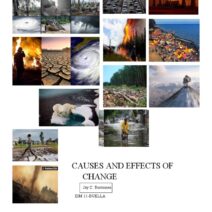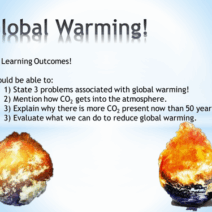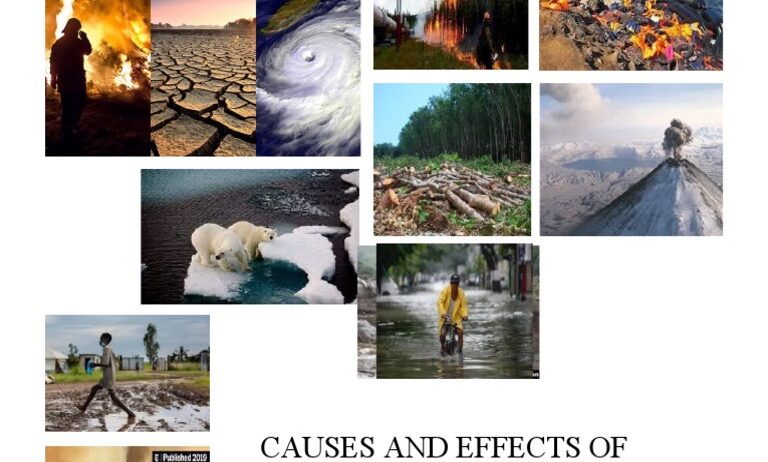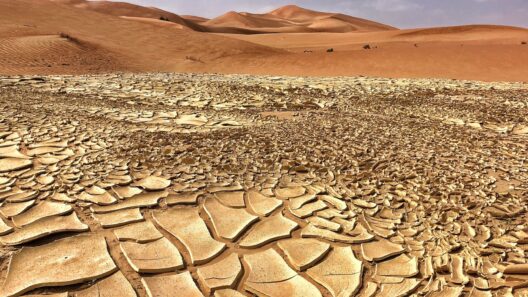Climate change represents one of the most formidable challenges of our era. It is akin to a slow-moving tsunami that, while barely perceptible in its nascence, gathers an inexorable momentum, threatening to reshape landscapes and lives irrevocably. Understanding the causes and effects of climate change is crucial for grasping the magnitude of this phenomenon, allowing us to confront and counteract its devastating implications.
Causes of Climate Change
At the heart of climate change lies an intricate web of causes, both natural and anthropogenic. Natural phenomena, such as volcanic eruptions and solar irradiance fluctuations, contribute to the Earth’s changing climate. However, it is the anthropogenic factors that have exacerbated the situation in recent decades, akin to a fire fanned by relentless winds.
1. Greenhouse Gas Emissions
One of the principal culprits of climate change is the excessive accumulation of greenhouse gases (GHGs) in the atmosphere. Carbon dioxide (CO2), methane (CH4), and nitrous oxide (N2O) are the most prominent among them. These gases act as a thermal blanket, trapping heat from the sun. The surge in their concentrations correlates closely with industrial activities, deforestation, and agricultural practices, which release vast quantities of GHGs. As factories belch fumes, and vehicles spew exhaust, the Earth gradually becomes warmer—a clear metaphor for a kettle on the stove, gradually reaching a boil.
2. Deforestation
Forests, often dubbed the lungs of the planet, play a pivotal role in moderating climate by absorbing CO2. However, rampant deforestation strips these carbon sinks, releasing stored carbon back into the atmosphere. Every swing of a chainsaw echoes the loss of biodiversity and contributes to a vicious cycle of climate deterioration. The delicate balance maintained by these ecosystems is disrupted, leading to an acceleration of climate change.
3. Industrial Agriculture
Modern agricultural practices, particularly those reliant on monocultures and synthetic fertilizers, are a double-edged sword. While they enable high-yield food production, they also release significant amounts of GHGs. Livestock farming is particularly problematic, producing methane through enteric fermentation. This agrarian paradox underscores the tension between sustaining human life and preserving the planet’s health.
4. Fossil Fuel Dependence
The stunning advances of technology and modernity have come at a steep price. Our reliance on fossil fuels—coal, oil, and natural gas—remains a significant driver of climate change. As societies industrialize, the demand for energy has surged, resulting in the extraction and combustion of these carbon-rich resources. Each combustion process releases CO2, painting a grim picture of an energy landscape that contributes profoundly to warming.
Effects of Climate Change
The effects of climate change are as varied as they are consequential, permeating every facet of life on Earth. As the planet warms, it is reshaped—not unlike a sculptor meticulously carving a once-familiar statue into an eerily different form.
1. Rising Sea Levels
One of the most alarming consequences of climate change is the rise in sea levels. As polar ice caps and glaciers melt, and thermal expansion occurs with warming oceans, coastal communities face submersion. It is a poignant reminder of nature’s power, transforming habitable landscapes into aquatic realms. Low-lying areas like the Maldives and parts of Louisiana exemplify this dire reality, posing existential threats to millions.
2. Extreme Weather Events
Climate change also serves as a catalyst for extreme weather patterns, accentuating an already volatile climate. Hurricanes, floods, heatwaves, and wildfires—each occurrence seems to bear the fingerprints of a warming atmosphere. The ferocity of these events leaves communities devastated, illustrating a grim tableau of destruction and displacement.
3. Biodiversity Loss
The intricately woven tapestry of life—ecosystems rich with diversity—is unraveling due to climate change. Shifting temperatures and disrupted habitats lead to species migration, and in worse scenarios, extinction. The loss of biodiversity weakens ecosystems, reducing their resilience and ability to provide essential services, such as clean air and water. Thus, every lost species reverberates through the ecological framework, akin to removing a thread from a fragile fabric.
4. Human Health Impacts
Climate change is not merely an environmental issue; it is a public health crisis. Higher temperatures can exacerbate respiratory and cardiovascular diseases, increase the prevalence of vector-borne diseases, and lead to food and water scarcity. Vulnerable populations, particularly in developing countries, are disproportionately affected, underscoring the ethical dimensions of climate change. It becomes clear that the health of people is inextricably linked to the health of the planet.
Conclusion
In summation, understanding the causes and effects of climate change unveils the intricate connections that bind humanity with nature. As the realities of climate change unfold with tragic clarity, it is imperative to recognize that every action matters. By addressing the root causes, from curbing GHG emissions to protecting forests, we can sow the seeds of a more sustainable future. The time is now to rally together, extinguishing the fires of complacency and igniting a fervor for change. Only then can we hope to harmonize our existence with the planet’s rhythms, restoring balance to a world teetering on the brink.







